{"title":"CURA: open-source design for emergency COVID-19 hospitals","author_name":"Carlo Ratti Associati","author_url":"https://www.youtubeom/user/carlorattiassociati","type":"video","height":"591","width":"1050","version":"1.0","provider_name":"YouTube","provider_url":"https://www.youtubeom/","thumbnail_height":"360","thumbnail_width":"480","thumbnail_url":"https://i.ytimgom/vi/iHa-BaJytgQ/hqdefault.jpg","html":"<iframe width="1050" height="591" src="https://www.youtubeom/embed/iHa-BaJytgQ?feature=oembed" frameborder="0" allow="accelerometer; autoplay; clipboard-write; encrypted-media; gyroscope; picture-in-picture" allowfullscreen></iframe>","arve_cachetime":"2021-03-05 09:17:15","arve_url":"https://youtu.be/iHa-BaJytgQ","arve_srcset":"https://i.ytimgom/vi/iHa-BaJytgQ/mqdefault.jpg 320w, https://i.ytimgom/vi/iHa-BaJytgQ/hqdefault.jpg 480w, https://i.ytimgom/vi/iHa-BaJytgQ/sddefault.jpg 640w, https://i.ytimgom/vi/iHa-BaJytgQ/maxresdefault.jpg 1280w"}
The world’s health systems are feeling immense pressure to catch up with Covid-19’s reach and speed. With over 400,000 worldwide cases (and still growing), the contagion is spreading so rapidly that health professionals are worried because facilities are already overflowing. We have already seen many countries like Italy, Spain, and China treating people in corridors, makeshift tents, and on streets by simply laying a sheet because beds are not available. The global community, from designers and startups to big fashion and alcohol brands, has been helping out by using all their resources to support the health system. Italian start-up Isinnova has 3D printed valves for ventilators, New York start-up Air Co. is making carbon-negative hand sanitizers to donate, Kering (Gucci’s parent company) and beer maker BrewDog have offered money and production lines to make items needed for the pandemic. The most important need of the hour, apart from the hope of a vaccine, are hospital beds and especially ICUs. The supply is nowhere close to the demand – the USA has 2.8 beds per 1000 people, while a country like India with a population of 1.3 billion only has 0.5 beds per 1000 people. Because there is no international standard for how many beds a country must have in hospitals, there is a huge disparity and despite Italy having 3.2 beds per 1000 people, which is more than India and the USA, it is still grappling with the reality of only treating those with a higher survival rate due to the lack of resources. These heroes are doing everything they can but due to the absence of adequate infrastructure, their efforts to contain the spread can quickly become futile if the space used is unhygienic, so Italian architects Carlo Ratti and Italo Rota have come up with a solution – Intensive Critical Unit (ICU) pods made from shipping containers!
These ICU pods are called CURA (Connected Units for Respiratory Ailments) which means “cure” in Latin (doesn’t that make you feel a little better?) and these will help take some load off the hospitals, especially in Italy. Ratti’s Studio, Carlo Ratti Associati, and MIT’s Senseable City Lab are creating mobile field hospitals with these CURA Intensive Care pods that serve as a biocontainment unit for two patients at a time. “The aim is that they can be quickly deployed in cities around the world, promptly responding to the shortage of ICU space in hospitals and the spread of the disease,” explained the CURA team as they build the first prototype unit at a hospital in Milan. These units can be set up as fast as tents with the benefit of having hospital-level hygiene which will help contain the infection and especially help those suffering from acute respiratory problems as they need intense care. This will also ensure that the health professionals remain safe while treating the infected who will have a better chance at recovery in the biocontainment units. “Whatever the evolution of this pandemic, it is expected that more ICUs will be needed internationally in the next few months,” says a spokesperson from the CURA team.
The pods can be assembled and disassembled very quickly, and because it is a shipping container, it can be moved from epicenter to epicenter by road, rail, and ship, around the world to address the need for more ICUs. The units are designed in repurposed 6.1-meter-long (approximately 8 feet x 8.5 feet) shipping containers with a ventilation system that generates negative pressure inside – this prevents the contaminated air from escaping thus reducing the risk of infecting health professionals who are more vulnerable because of a shortage of protective gear. This is a common technique used in hospitals and laboratories and the designers have created CURA to comply with Airborne Infection Isolation Rooms (AIIRs) standards. Each of the ICU pods will have all the medical equipment needed to support two coronavirus Covid-19 intensive-care patients at a time. The beautiful part about CURA is that it is modular – each pod could work as a stand-alone unit or multiple pods can be connected with an inflatable structure to create a bigger intensive care center. These were designed keeping in mind that they would be an expansion to existing hospitals by being set-up in their parking area but have the flexibility to be turned into a larger field hospital if needed. “CURA aims to improve the efficiency of existing solutions in the design of field hospitals, tailoring them to the current pandemic,” explained the team who are working hard to do their bit as non-health professionals in supporting those at the frontline of this outbreak.
While we can’t match the contribution of health professionals, the world needs every single person to play their part right now – designers, engineers, creative professionals, manufacturers, start-ups, brands are all called upon to offer any and every service they can to help ease the ache mankind is feeling. And if you don’t have anything to offer, you still have an equally powerful role to play in breaking the exponential transmission chain by simply staying indoors. Let’s flatten the curve, Avengers assemble…in your homes!
Designers: Carlo Ratti Associati with Italo Rota (Design and Innovation), Massachusetts Institute of Technology (Design and Innovation), Humanitas Research Hospital (Medical Engineering), Policlinico di Milano (Medical Consultancy), Jacobs (Alberto Riva – Master Planning, design, construction and logistics support services), Studio FM Milano (Visual identity & graphic design), Squint/Opera (Digital media), Alex Neame of Team Rubicon UK (Logistics), Ivan Pavanello of Projema (MEP Engineering), Dr. Maurizio Lanfranco of Ospedale Cottolengo (Medical Consultancy).
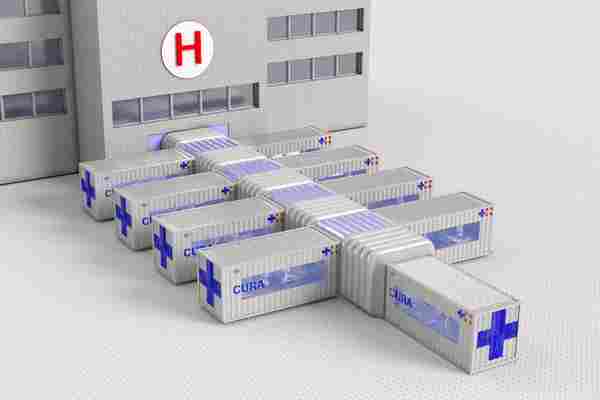

This panoramic view cabin keeps bugs out using a unique Japanese technique
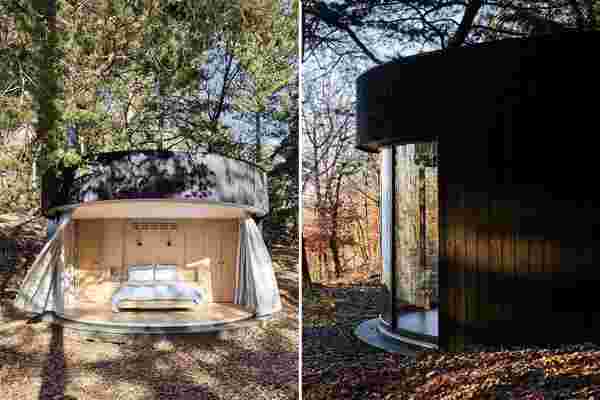
I am obsessing over outdoor cabins since we are all stuck indoors. My favorites are the ones like LUMIPOD because they bring the vastness of nature into your cabin through the thoughtfully designed structure and, in this case, creative windows! We all know windows are a true blessing in quarantine and LUMIPOD seems to have the one so large its basically a door into the wild.
The LUMIPOD are a series of prefabricated cabins that are installed 1000m above sea level in the French Alps (here is when you start planning your post-pandemic getaway) so you can only imagine how pristine the views are. To do the French Alps justice, the design team built the structure with one aim – giving you a fully immersive experience of being in nature with a luxurious upgrade. The most unique feature about this cabin is its LUMICENE windows – the curved window provides a 180º view and makes you feel like you are in a snow globe. The window is set in aluminum frames sliding between two rails so you can blend the indoors and outdoors by simply opening the window.
The circular cabin measures 5.45 m with interiors specifically designed to resemble a high-end hotel. The structure is made from steel to provide top grade stability that is required by the LUMICINE windows. Another interesting feature about this house is how it keeps the insects away – the exterior has been wrapped in Douglas fir which has been charred using a Japanese technique (shou-sugi-ban) proven to keep bugs outside your bedroom! The interiors have earthy tones because of the light oak and merino wool usage which provide a warm ambience while also keeping the cabin literally warm through their insulation properties.
It is a minimal cabin that allows you to focus on the scenic experience rather than being distracted by free toiletries. “This prefabricated housing module, a real cocoon of simplicity, settles in the middle of Nature to welcome city dwellers willing to relax away from the concrete jungle,” says the LUMIPOD team. The cabin has three different sizes to accommodate your needs and can be installed in 2-3 days. It feels like a personal snow globe and I will continue to imagine all the little details about it until the next cabin getaway.
Designer: LUMIPOD
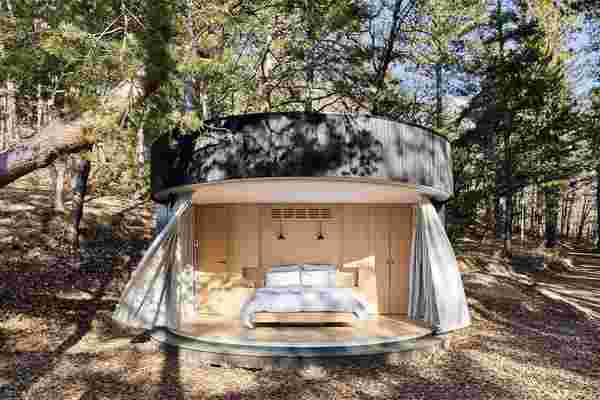
Stunning modern home comes with an all-glass conservatory that intersects through the architecture!
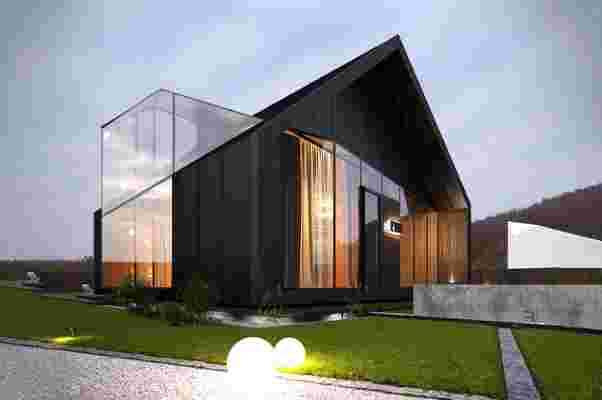
You’ve never seen a skylight look this beautiful! Meet the Chalet-2, a modern bungalow-style home designed by Ukrainian architect and interior designer, Alex Svyryd. Designed in black, with almost cabin-like proportions, the home boasts of a clean, Scandinavian-inspired design that sort of looks like a rock with a crystal jutting through it. The crystal in question, is the Chalet-2’s gorgeous conservatory, which cuts through the building’s architecture, creating a two-way window that allows outsiders to admire the chalet’s interiors, and the home’s residents to get a stunning view of their surroundings… enjoyed best at sunset with a cup of coffee or hot chocolate between your hands!
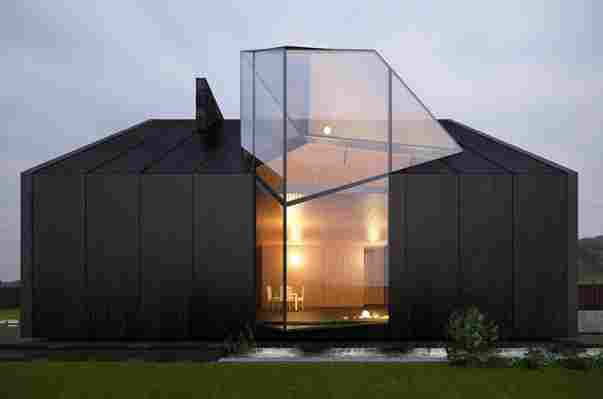
The house’s black appearance tends to give it an air of secrecy, but the glass conservatory almost challenges that, providing a beautiful peek into the house’s warm and cozy, wooden interiors. The conservatory even acts as a skylight, allowing light to make its way through right into the house’s living room, illuminating the interiors with a shaft of direct natural light that diffuses all over the house, illuminating it beautifully during the day.
Designer: Alex Svyryd








